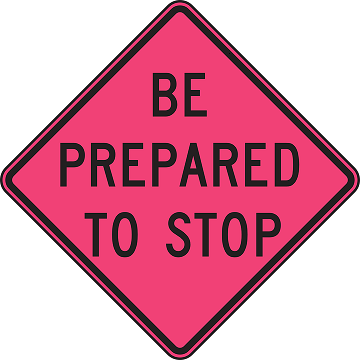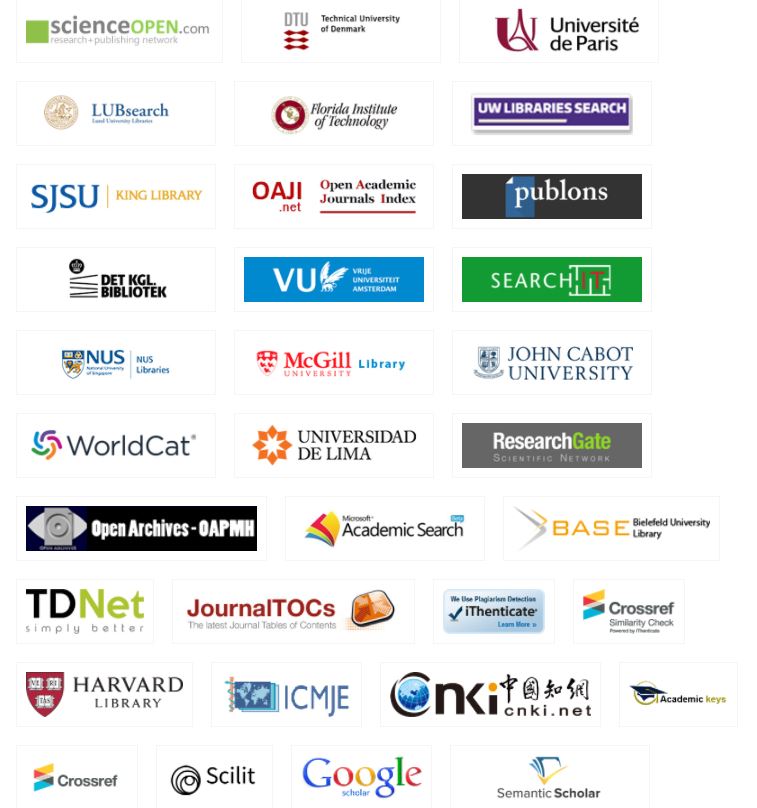Strategic publishing
What is Predatory Publishing?
 The term Predatory Publishers has become part of the publishing vocabulary. It was popularised by Jeffrey Beall, a Librarian at the University of Colorado, on his blog where he compiled a list of “predatory open access journals”. He also published an article on the topic in Nature: Predatory publishers are corrupting open access in 2012. Jeffrey Beall deactivated his blog and list of predatory journals in 2017, for reasons that have never been fully explained. However, versions of it are still in existence and being updated.
The term Predatory Publishers has become part of the publishing vocabulary. It was popularised by Jeffrey Beall, a Librarian at the University of Colorado, on his blog where he compiled a list of “predatory open access journals”. He also published an article on the topic in Nature: Predatory publishers are corrupting open access in 2012. Jeffrey Beall deactivated his blog and list of predatory journals in 2017, for reasons that have never been fully explained. However, versions of it are still in existence and being updated.
The combination of the rise of online publishing, the importance placed on university rankings, the expectations on academics to publish in prestige journals, and the movement towards Open Access publishing has seen an increase in the number of predatory publishers. This trend covers not just journals and journal articles, but also monographs, books, and conferences.
As the threat posed by predatory publishers has continued to rise, more research has been conducted into, and information written, about predatory publishers, their effect on research and how to avoid falling prey to them.
There has been a lot of debate about what predatory publishing is and which publishers should or should not be termed predatory. Even the term “predatory” has been contentious. Descriptions of the practice has varied from fraudulent, unethical, deceptive, fake and vanity publishers.
In April 2019, a group of leading scholars and publishers from ten countries agreed on a definition of predatory publishing:
“Predatory journals and publishers are entities that prioritize self-interest at the expense of scholarship and are characterized by false or misleading information, deviation from best editorial and publication practices, a lack of transparency, and/or the use of aggressive and indiscriminate solicitation practices.” Predatory journals: no definition, no defence, 11 December 2019.
Risks
It can be very difficult to identify these publishers, but the risks you face by publishing in such a journal or presenting at a predatory conference can be far reaching. The risks include:
- Damage to your reputation as a researcher
- Damage to your institution
- Compromising the quality of research output through lack of a genuine peer review process
- You will most likely be unable to publish your article in other journals
- Loss of copyright to your articles as this is retained by the “publisher”
- A loss of research or loss of trust in research
The article Predatory journals: no definition, no defence identifies real life consequences of research that has been published in fraudulent journals. This has not only affected researchers and institutions, but ordinary people who have relied on the research and science published in these journals. The documentary “Inside the Fake Science Factory” outlines the serious consequences to readers trusting information in fake journals.
There is also research, as noted in Predatory publishing in Scopus: evidence on cross-country differences, showing that predatory journals are “infiltrating” citation databases such as Scopus. This has ongoing repercussions for science and medicine in particular.
Read:
The Predator Effect: Understanding the Past, Present and Future of Deceptive Academic Journals by Simon Linacre
Authors beware! Predatory publishing is worthless
Predatory publishers criticised for ‘unethical, unprincipled’ tactics - Background Briefing Podcast (August 2015)
Why Beall’s Blacklist of Predatory Journals died - University World News, 22 September, 2017
Watch:
Publishing Power Hour 2: Predatory journals and (Un)ethical publishing [45:29] (Curtin staff and students only)
How to spot a Predatory Publisher
The Predatory landscape is varied and ever changing, and you will find that there are a number of different types of predatory journals. Some of the most difficult to identify are those termed hijacked or cloned journals. These journals pretend to be an actual legitimate journal, and the publishers are deliberately setting out to deceive authors into thinking they are dealing with the authentic, reputable journal. In many cases it is almost impossible to separate the predatory journal from the authentic journal title.
You will also find that the journals and their websites are constantly evolving and changing. Often you will go back to a journal website and it will no longer be active or it will redirect you to a different site.
Predatory publishers can and do:
- Make up their own journal titles
- Present very professional websites (but sometimes not)
- Send unsolicited emails to get you to submit your research
- List journal titles that are almost indistinguishable from a legitimate journal title
- Mirror legitimate journals
- List names of well known academics as editorial board members - often without their knowledge
- Provide fake journal impact factors and other meaningless credentials
However the following is also true:
- Not all predatory publishers are based in developing countries
- Not all unprofessional looking websites are predatory
- It can be difficult to distinguish a predatory journal from a journal that is under-resourced.
- Some can start out less credible and then raise their standards
Read:
Identity theft of the Scholarly kind
A to Z list of common features in emails from predatory publishers (Rutgers University)

Well known Predatory Publishers
There are some predatory publishers that are very well known, yet they still remain in business. They are very proactive in targeting academics and graduate students via email. If targeted by a predatory journal or publisher it can be very difficult to extract yourself and your research once you have submitted an article for publication.
Some of the more well established publishers to beware of include:
-
OMICS
OMICS is a predatory publisher based in India. They publish 700 hundred+ journals in the scientific, management and medical fields of research. This publisher is very deceptive as many of the journal titles it publishes are almost indistinguishable from legitimate journal titles. OMICS has also moved into the lucrative area of Predatory Conferences and Workshops.
In 2019, the US Federal Trade Commission (FTC) won a case against the organisation on charges that they made deceptive claims to academics and researchers about the nature of their conferences and publications, and hid steep publication fees. OMICS was ordered to pay more than $50.1 million in fines. It is highly unlikely that the FTC will see any of the money -
Lambert Academic Publishing
This publisher targets newly graduated masters and PhD students offering to publish their thesis as a book. They promise to market and distribute the book. However, Lambert does not edit or proof read the Theses or Dissertations they publish, and no attempt is made to peer review the content. The website is very attractive and has the look of a legitimate publisher. Lambert is a subsidiary of VDM Verlag which is based in Germany. -
World Academy of Science, Engineering and Technology (WASET)
The WASET organisation is very active in organising predatory conferences and publishing fake journals. The organisation is based in Turkey and has been the subject of a number of investigations by journalists and universities. WASET has especially targeted Korean academics and universities in the past. The organisation has been estimated to hold around 300,000 events annually. -
International Educative Research Foundation and Publisher (IERFP)
The IERFP publishes the journal IJIER - this website has many spelling errors and lists editors who are not aware they are listed on the editorial board. This publisher is prolific in sending out requests asking academics to submit articles to the journal.
There are many more publishers than those mentioned above. One website based on the original Beall’s List has a list of Predatory Publishers. It is updated as new information is found or submitted to the site. You should always use more than one source to verify if a publisher is predatory.
Read:
Lambert Academic Publishing a must to avoid
I sold my undergraduate thesis to a print content farm
US Judge rules deceptive publisher should pay $50 million in damages
There are often a number of warning signs that may alert you to the fact that you are being approached by a predatory publisher. Questions to ask yourself or signs that should ring alarm bells include:

- How is the publisher approaching you - unsolicited emails?
- Are the emails excessively flattering?
- Are there mistakes in your name or your title?
- Is the publication even relevant to your research area?
- Are there a large number of unrelated or specialist journal titles in the list of publications?
- Does the website contain mistakes in grammar and spelling?
- Is the email address a genuine business address or does it use Gmail or yahoo addresses?
- Are fast turnover times promised?
- Is the publisher offering very low cost Article Processing charges?
- Does the website targets authors rather than readers?
- Does the website contain metrics that are unfamiliar or even fake?
Fake Metrics
One of the many ways in which a predatory publisher tries to convince authors that they are a legitimate publisher is through the use of metrics and impact factors. Often these are made up or totally irrelevant. For example some publishers simply list names of well-known universities and/or their libraries as evidence of impact. They may list Google, Google Scholar, EndNote or iThenticate (a plagiarism detection software) as evidence of metrics. These are totally meaningless in this context.
There are some well known fake metrics around that can raise a red flag. The list includes:
-
COSMOS Impact Factor

- CiteFactor
-
Eurasian Scientific Journal Index
- JIFactor
- Index Copernicus
- Global Impact Factor
Read:
When considering if a journal is predatory or legitimate, it is advisable to use more than one source of information to determine its status. We advise that you consult a range of sources and base your decision on the total evidence that you gather.
There are many resources available to assist you to check if a publisher is predatory. Academic libraries and publishers produce checklists and guidelines that you can follow. The websites and organisations below are particularly useful in developing a strategy to check for predatory publishers:
If you follow the guidelines and use the tools listed for selecting quality journals in this toolkit, you will be well on the path to choosing a journal that is ethical, reputable and will showcase your research to your peers and your chosen audience. However, there are also some specific resources that you can use to help you identify any journals that may be predatory. It has been estimated that more than 90 checklists have been developed to help identify predatory journals and publishers.
There are some publishers who have tapped into the market and have launched their own subscription based lists of journals that they have identified as predatory. One such publisher is Cabell’s International. The Blacklist, now called Journalytics, had over 12,000 titles on its list of predatory journals in 2019.
If you suspect a journal may not be authentic, you can do a quick assessment to get a feel for the legitimacy of the title:
- Google for independent information - check blogs and conversations online about the journal
- Check if the publisher is one of the well known predatory publishers
- Check claims of where they are indexed - if the journal says it is indexed in Scopus, check their entry in the database
- Look at the metrics and Impact factors - some are obviously fake, others are irrelevant or have no scholarly impact (e.g. EndNote)
Lists of Predatory Publishers
After Jeffery Beall took down his list, a small group of scholars and information professionals decided to anonymously rebuild and resurrect that list. They provide a number of good tools to start the process of assessing if a journal is predatory. Do not use the lists as the sole source of truth, but build the evidence from a range of sources. The group has lists of the following:
Lists of Legitimate Journals
Predatory publishing has flourished in part because of the Open Access movement. Using the tools that identify if Open Access journals is therefore one way of checking the credibility and legitimacy of journals.
A number of countries in the Global South have begun to develop lists of credible journals that are published by their institutions. This is a response to the proliferation of predatory journals that are published in the region.
- The UGC-CARE has published a list of credible Indian scholarly journals.
- African Journals Online (AJOL) is a platform for African published scholarly journals
Resources:
Read:
Why India is striking back against predatory journals - Nature 571, 7 (2019)
Predatory Conferences
For many academics attending conferences is a way of showcasing their research, testing new ideas, keeping up to date with research trends, networking and finding collaborators. It is a way of getting feedback on your research from your peers, prior to publishing your research in a journal or a book. However, as with predatory publishing, there is an increase in predatory conferences, and often the same predatory journal publishers are behind the predatory conferences.
The following tips will help you spot them:
- Check to see if your conference is on a known black-list.
- Google for reviews of the Conference.
- Have a a look at the Think. Check. Attend. website and guidelines (see below).
- Check with a trusted contact in your professional network who may have attended previously.
- Check with your industry or professional contacts to see if they have attended these events before.
- Review the professional society, organisation and conference venue location information.
- Look for reputable websites containing “.edu” or “.org” addresses.
- Be wary of contact details using free email accounts such as Gmail, Yahoo, Outlook etc.
- Research the conference venue location and confirm that the location is legitimate, and a booking exists under that professional society or organisation name.
- Check if the conference offers quick turnaround on acceptance of papers or offer awards. Most predatory conferences promise quick turnaround times for papers to entice unsuspecting academics and offer a large number of awards. To further lure researchers, organisers promise paper publication guarantee, where most legitimate conferences do not.
- Do the editors offer any previous academic information on themselves? If no academic educational background is provided on review members or editors, it is likely they are not qualified to conduct the peer-review process.
Resources:
Read:
WASET: 2020 Conference Schedule - example of a predatory Conference organiser
How to select which conference - blog post by Eva Lantsoght
Inside a “Fake” Conference: a Journey into Predatory Science - Technology News, July 11 2019
Watch:
DEF CON 26 [01:56:07] - Inside the Fake Science Factory. Findings from a team of investigative journalists, hackers and data scientists who delved into the parallel universe of fraudulent pseudo-academic conferences and journals. The findings highlight the prevalence of the pseudo-academic conferences, journals and publications and the damage they can and are doing to society.


